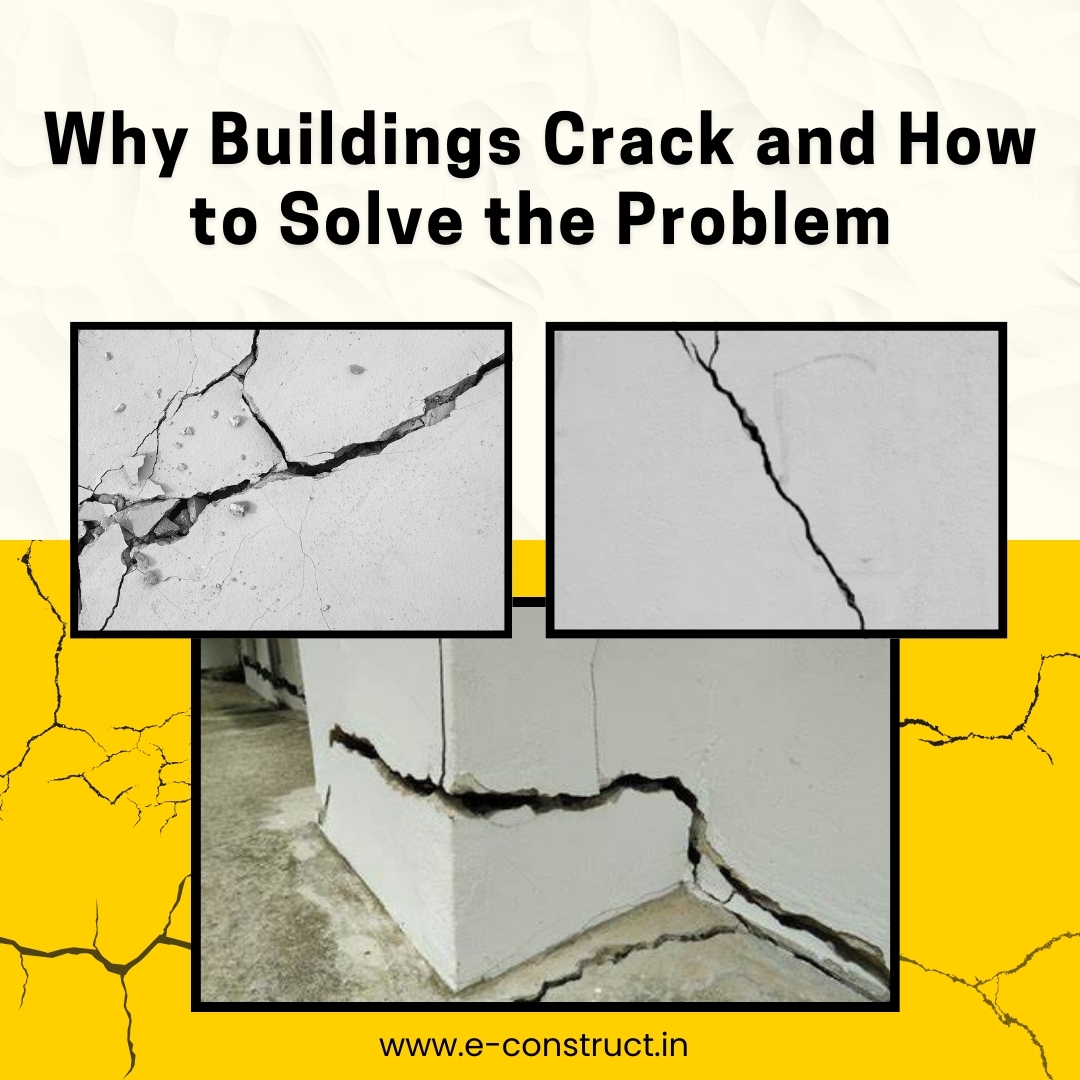Why Buildings Crack and How to Solve the Problem

Cracks in buildings are a common issue, often raising concerns for property owners and construction professionals alike. While some cracks may be merely cosmetic, others can signal serious underlying structural problems. Addressing these issues is crucial not only for maintaining the aesthetic appeal of a building but also for ensuring its safety and longevity. In this blog, we’ll dive into the common causes of building cracks, explore different types of cracks, and provide practical solutions to both repair and prevent them.
Types of Cracks in Buildings
Not all cracks are created equal. Cracks are generally divided into two categories: structural and non-structural. Understanding the difference can help determine the necessary solution.
Structural Cracks
These cracks indicate serious issues within the building’s framework and can compromise the structure’s stability. They usually result from foundation settlement, overloading, or design flaws.
- 1. Vertical Cracks: Often appear in walls due to foundation settlement.
- 2. Horizontal Cracks: Typically seen in beams, indicating bending stress.
- 3. Diagonal Cracks: Can result from a combination of issues like foundation movement and structural stress.
- Solution: Structural cracks often require professional intervention, including methods such as epoxy injections, underpinning, or steel reinforcement to restore the building’s integrity.
Non-Structural Cracks:
- These cracks are typically cosmetic and do not pose a threat to the building’s safety. They are often caused by thermal expansion, minor settlement, or shrinkage.
- 1. Hairline Cracks: Common in plaster or paint due to material drying and settling.
- 2. Surface Cracks: Usually found in non-load-bearing walls and finishes.
- Solution: Non-structural cracks can be repaired with flexible sealants or patching compounds. While not urgent, regular maintenance and monitoring will prevent them from worsening.
Why Do Buildings Crack?
Buildings, made from a mix of materials, are constantly exposed to various forces and environmental conditions. As they age, these conditions can lead to cracks. The most common causes include:
- 1. Foundation Settlement: One of the primary causes of cracks in buildings is foundation settlement, which occurs when the soil beneath the structure shifts, leading to uneven settling. Poor soil conditions, inadequate compaction, or erosion are often to blame. As the foundation settles, parts of the building move, causing stress that results in cracks in walls and floors, especially around windows and doors. To prevent settlement, it is crucial to conduct proper soil testing and ensure adequate drainage during construction. If settlement does occur, techniques like underpinning or slab jacking can stabilize the foundation and prevent further damage.
2. Thermal Expansion and Contraction : Temperature fluctuations cause materials like concrete, steel, and brick to expand and contract. When these materials are not allowed to move freely, the resulting stress can lead to cracks in the structure. This thermal movement often causes hairline cracks in walls, floors, and ceilings, which can worsen over time if left unaddressed. To minimize cracking due to temperature changes, it is essential to use expansion joints during construction and select materials with similar thermal properties.
3. Water Damage : Water infiltration is a significant cause of building cracks, as moisture weakens materials like concrete and masonry. Poor drainage, leaking pipes, or rising damp can exacerbate the problem, leading to structural damage. Water intrusion not only erodes mortar joints but also causes rusting in steel reinforcement, further compromising the integrity of the building. To prevent moisture-related cracks, it is essential to ensure proper drainage around the structure, maintain gutters and downspouts, and apply waterproof coatings and sealants to protect against water damage.
4. Poor Construction Practices Poor construction practices, like improper concrete mixing or weak reinforcement, can weaken a building and cause early cracking. Using low-quality materials often leads to premature structural issues.To avoid such issues, it is crucial to hire experienced contractors, use high-quality materials, and conduct regular site inspections during construction to identify and address problems before they escalate.
5. Overloading : Overloading occurs when the weight placed on a building exceeds its design limits, often due to changes in usage or the addition of heavy equipment or extra floors. This excess weight puts stress on load-bearing walls and beams, leading to cracks and potential structural instability . To prevent such issue, it is essential to consult engineers before adding extra weight to the structure. If needed, structural reinforcements can be implemented to safely accommodate the additional loads.
6. Soil Movement : Soil shifts caused by moisture changes, especially in clay-rich soils, can lead to uneven foundation settling and result in cracks. This uneven soil movement impacts the foundation, often causing visible cracks in floors, walls, and ceilings. To mitigate this risk, proper soil analysis and well-designed foundations during construction are essential to address potential soil movement and minimize the likelihood of cracking.
Conclusion:
Cracks in buildings are a common concern, but they can be effectively managed with early detection and appropriate measures. Understanding the causes of cracks and implementing preventive strategies is key to maintaining the integrity and longevity of any structure. Regular inspections, proper drainage, quality construction practices, and monitoring for overloading are crucial steps in preventing cracks. Additionally, timely repairs and professional consultation for significant or structural cracks can ensure the safety and stability of the building, helping property owners avoid costly repairs and future complications.


